It’s no secret that we live – and work – in a busy, bustling, fast-paced world, one where people often feel obliged to work longer hours or through holidays just to keep up. But this mentality doesn’t lead to greater productivity – in fact, it’s the opposite, especially when we consider the impact of employee stress, exhaustion, and burnout.
“While extreme working culture and gruelling hours have been glamorised in some cases, the conversation around burnout has largely shifted to recognise its seriousness,” says a 2023 BBC article on the topic. “Data has been a part of this evolution in attitude: a May 2021 study by WHO and the International Labour Organization suggested that an estimated three-quarters of a million people die annually from ischaemic heart disease and stroke due to working long hours.”
This is a stark reminder to work smarter, not harder. And one of the best ways to work smarter is to effectively prioritise tasks. Prioritisation – the process of arranging tasks in order of importance to ensure that the most important ones receive the attention they deserve – is one of the most effective ways to navigate heavy workloads with precision and purpose.
It’s about more than just managing a to-do list. It’s about aligning daily actions with broader goals, making strategic decisions about how to allocate time and resources, and cultivating a disciplined approach to work and life. And task prioritisation is closely connected with effective time management, which is the focus on wisely allocating our most limited resource – time.
The importance of prioritisation: examples
With the right prioritisation strategies and tools, people and organisations can be more productive and achieve better results at work, and enjoy a more balanced, fulfilling life more generally.
Productivity
Remember that effective prioritisation is not just about getting things done; it’s about getting the right things done at the right time. And at its most fundamental level, productivity is about doing more with less – less time, less effort, and less stress. Prioritisation is the key to productivity because it enables people to find and focus on the tasks that will have the greatest impact.
In short, people who prioritise their tasks get more done.
Results
It’s fair to say that a person’s ability to identify and action priority tasks can mean the difference between success and failure. We know that people who prioritise their tasks get more work done, and as a result of this, they achieve more, too. These achievements can be translated into a number of tangible results, from deadlines met to profits generated. And don’t forget that prioritisation ensures people focus first on high-impact tasks, which means the results that follow are likely to be high-impact, too.
Healthier work-life balance
Yes, effective task prioritisation improves work output and results, but one of its most compelling benefits is that it helps people create and maintain a healthier work-life balance.
By distinguishing between the urgent and most important tasks, people can better manage their workloads, reduce their stress levels, and carve out more time for personal pursuits and relaxation.
A step-by-step guide to prioritisation
Make a list
The journey to effective prioritisation begins with a simple but powerful tool: the to-do list.
Start by creating a comprehensive task list, or master list, that offers a clear overview of what needs to be done, from daily tasks to long-term goals.
Determine what’s important
Once the list is complete, the next step is to determine the level of importance of each task and list them with the highest priority task at the top. This is where prioritisation methods such as the Eisenhower Matrix and the ABCDE method come into play:
- The Eisenhower Matrix divides tasks into quadrants based on urgency and importance, helping people to focus on what truly matters.
- The ABCDE method assigns a letter to each task, indicating its priority, with ‘A’ tasks being high priority and ‘E’ tasks being low-priority.
This step requires people to be familiar with the top priorities of their organisations and within their teams so that their tasks are aligned and prioritised accordingly. If unsure, they should read strategy documents, speak to senior team members, and then go back to the list for another look.
Time to focus
Once priorities are set, it’s time to focus – something that’s often easier said than done.
When a long to-do list looms, it can be tempting to lean into procrastination, whether it’s scrolling through social media or even doing easy, small tasks that aren’t urgent or important. To combat this mentality, there are a variety of different techniques that can help.
For example, the Pomodoro technique involves working in short bursts with regular breaks to maximise productivity and momentum.
Some people swear by a technique called eat the frog – based on a quote from Mark Twain: “If it’s your job to eat a frog, it’s best to do it first thing in the morning. And if it’s your job to eat two frogs, it’s best to eat the biggest one first.” – and tackling the most challenging tasks first.
Others use a tactic called time blocking to maintain their focus. This involves dedicating specific blocks of time for different tasks or categories of work, and ensures that people focus on a single task at a time. Remember that while multitasking may seem like a good way to be productive, it can actually slow people down, and allows for more errors and inaccuracies to creep into the work they produce.
Ultimately, the most effective technique varies from person to person, so trying out different methods can be helpful in finding the best fit.
What to tackle first: How to prioritise when there are multiple urgent and important tasks
When faced with multiple important and urgent tasks, prioritisation becomes a delicate balancing act.
The key lies in identifying tasks that are both time-sensitive and have the greatest impact, and sifting through the priority list to understand what are the most complex tasks, what tasks require immediate attention, and what is the most important work.
Factors to consider include:
- Due dates
- The amount of time and effort required to complete each task
- The potential consequences of missed deadlines or delayed action.
And don’t forget to be realistic. There is only so much time in a day, so if the workload is unmanageable, consider negotiating a project’s scope, speaking to stakeholders about prioritising one project over another, at least in the short-term, or pushing back a deadline if there are competing priorities due for the end of the day.
A helping hand: Common tools and apps for task management and prioritisation
Prioritisation isn’t always a skill that comes naturally to people, but fortunately there are a variety of tools and apps available to streamline task management and prioritisation.
For example, project management tools like Trello, Workday, Asana, and Monday.com offer templates for organising tasks, setting priorities, and managing workflows. They also offer features such as notifications about upcoming project dates and will highlight dependencies within projects to help team members stay on track and meet deadlines.
Prioritise your career: Develop your leadership and management skills
Develop strengths in everything from effective decision-making to strategic management with the University of Sunderland’s 100% online MSc Management course. This flexible master’s course has been created to give busy working professionals an opportunity to develop the knowledge they need to boost their career prospects while still working in their current role.






